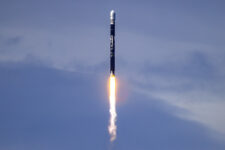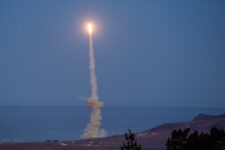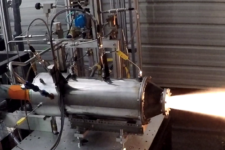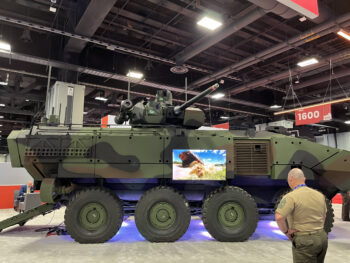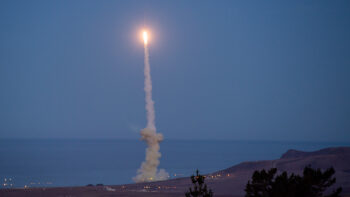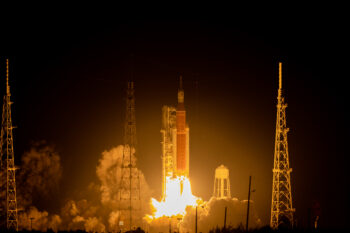
Kuva Space’s first hyperspectral microsatellite, Hyperfield-1, is scheduled to launch in June 2024. (Graphic: Kuva Space)
WASHINGTON — Finnish hyperspectral satellite startup Kuva Space is expanding operations to the US with a new office in Fairfax, Va. in hopes of breaking into the Defense Department and Intelligence Community market, a senior company official tells Breaking Defense.
Jerry Welsh, a Kuva board member who today was announced as leading the firm’s US marketing efforts, said in an email that the award by the National Reconnaissance Office last year to study the capabilities of commercial hyperspectral imaging providers “validates US government interest” in the technology.
“It also signaled NRO’s commitment to continue to explore similar technologies, recognizing that each might offer unique capabilities and collectively provide greater persistent monitoring,” he said, meaning that there is plenty of time for Kuva to get in on the game. (The six firms tapped by NRO for the hyperspectral study contracts, each worth about $300,000, are BlackSky Technology, HyperSat, Orbital Sidekick, Pixxel, Planet, and Xplore.)
Further, said Welsh — former CEO of Finnish synthetic aperture radar (SAR) firm ICEYE’s American arm that won an NRO study contract back in in 2022 — there continues to be “a huge gap between what commercial providers are promising to deliver and the actual amount of hyperspectral imagery provided today.
“Drawing from past experience, being an early entrant to the U.S. market is not required. It’s more important to introduce innovative capabilities tailored to the specific requirements of the U.S. Government, wrapped within a persistent and reliable service,” he added.
The firm plans to launch its first microsatellite, Hyperfield-1, in June, with a second to follow in the fall — both of which Welsh said are already manifested on SpaceX flights. He noted that while the full planned constellation of 100 satellites won’t be ready until 2030, Kuva can “start providing reliable service to commercial and government customers in the US and our partner nations” once the first two are up.
Kuva Space previously had three successful missions launched between 2018 and 2021, including two for the European Space Agengy, that carried various demonstration and scientific payloads. It also has launched a demonstration version of its hyperspectral camera.
Hyperspectral cameras break down pixels into hundreds of frequency bands and thus can detect minute differences in colors that cannot be seen by the human eye, or detected by other types of imagery cameras such as infrared. Thus, hyperspectral sensors can “see” what materials a surface is made of and identify individual elements in the surrounding atmosphere — for example, identifying a chemical weapons production facility.
According to the company’s press release, Kuva’s cameras are “unique” in the way they can be “tuned in orbit to optimize for a specific use case across a wide range of application requirements.”
Welsh elaborated that this means “in addition to measuring the whole spectrum, we can tune the camera to collect a specific set of spectral bands that are most critical for the application in question for improved image quality and very high signal-to-noise ratio (SNR).”
The company also is touting its artificial intelligence (AI) system for processing data.
“Kuva Space’s advanced AI-powered analytics platform automatically transforms proprietary hyperspectral data and combines third-party data where needed to create analytics insights within 15 minutes. This enables customers to cost-effectively monitor, identify, and forecast changes and their impact in near real-time,” the press release said.
The company already has representatives in Finland, Japan, Belgium, and the United Kingdom, and has raised $24 million in funding from various venture capitol providers as well as from government investors ESA Philab and Business Finland, the release added.
“The next funding round is expected to commence in the first half of 2025. With our U.S. office and early market traction, we are also looking forward to engaging VCs in the U.S.,” Welsh said.
As DoD shifts $50B in spending, can an old playbook protect legacy programs?
Running through potential winners and losers under Defense Secretary Pete Hegseth’s move to shift $50 billion towards different priorities in fiscal 2026.




